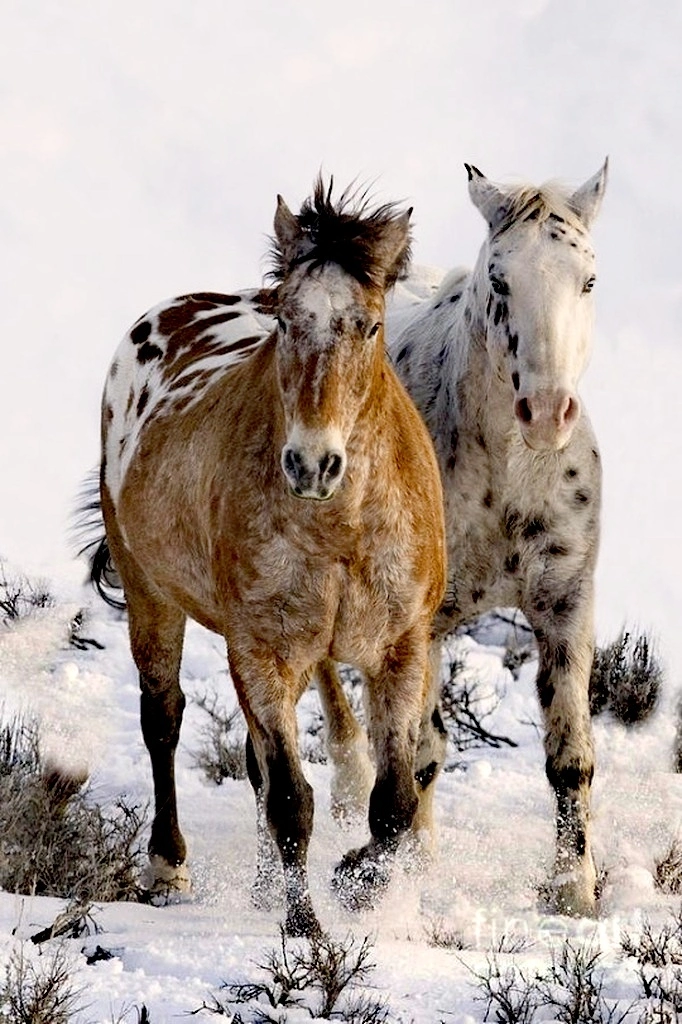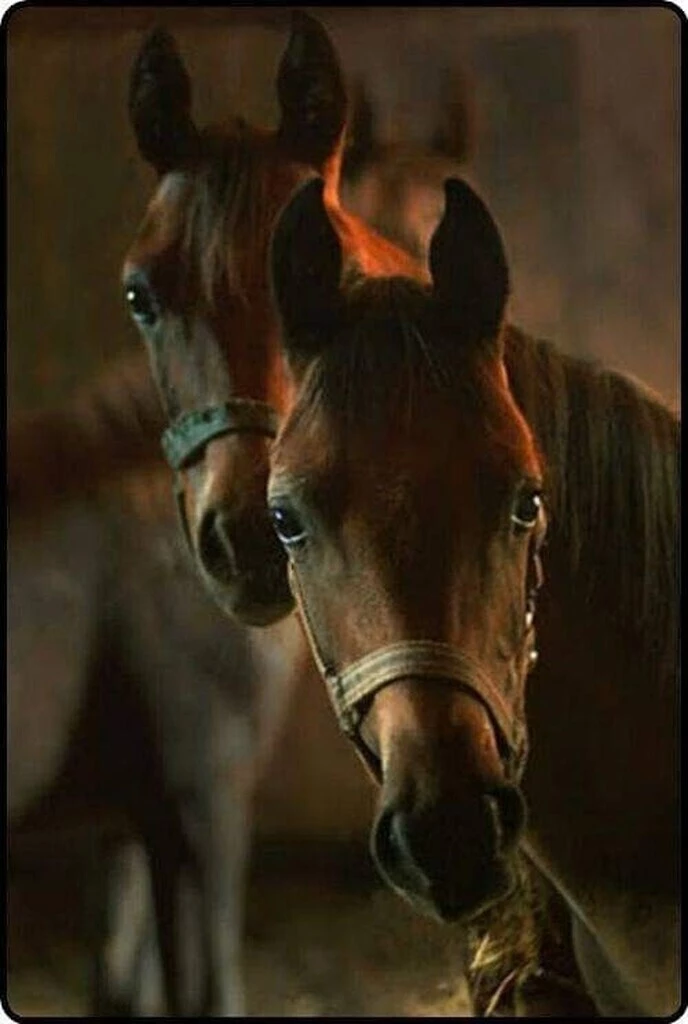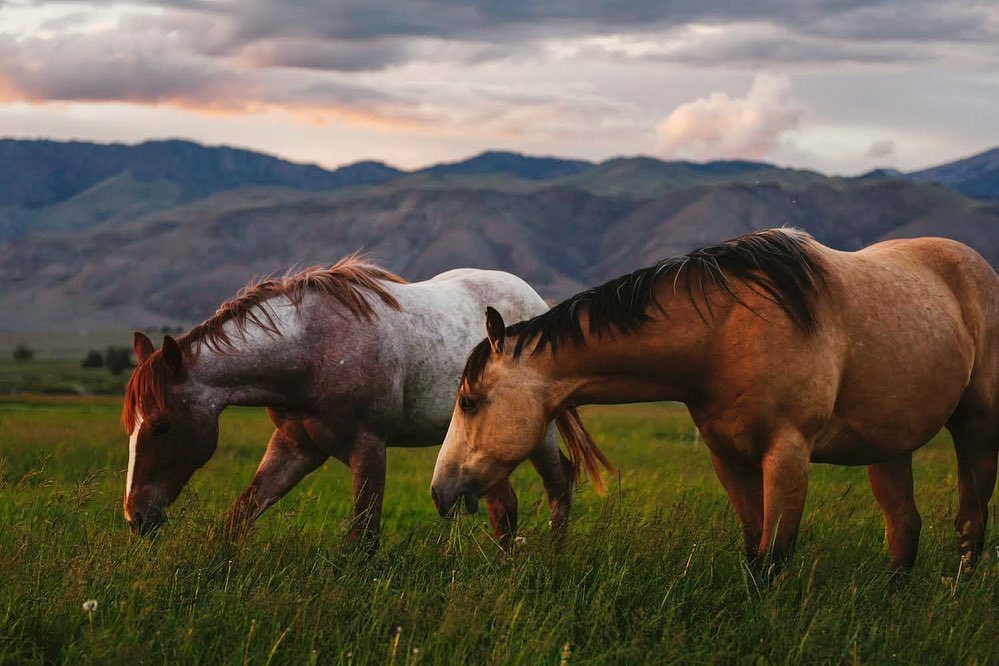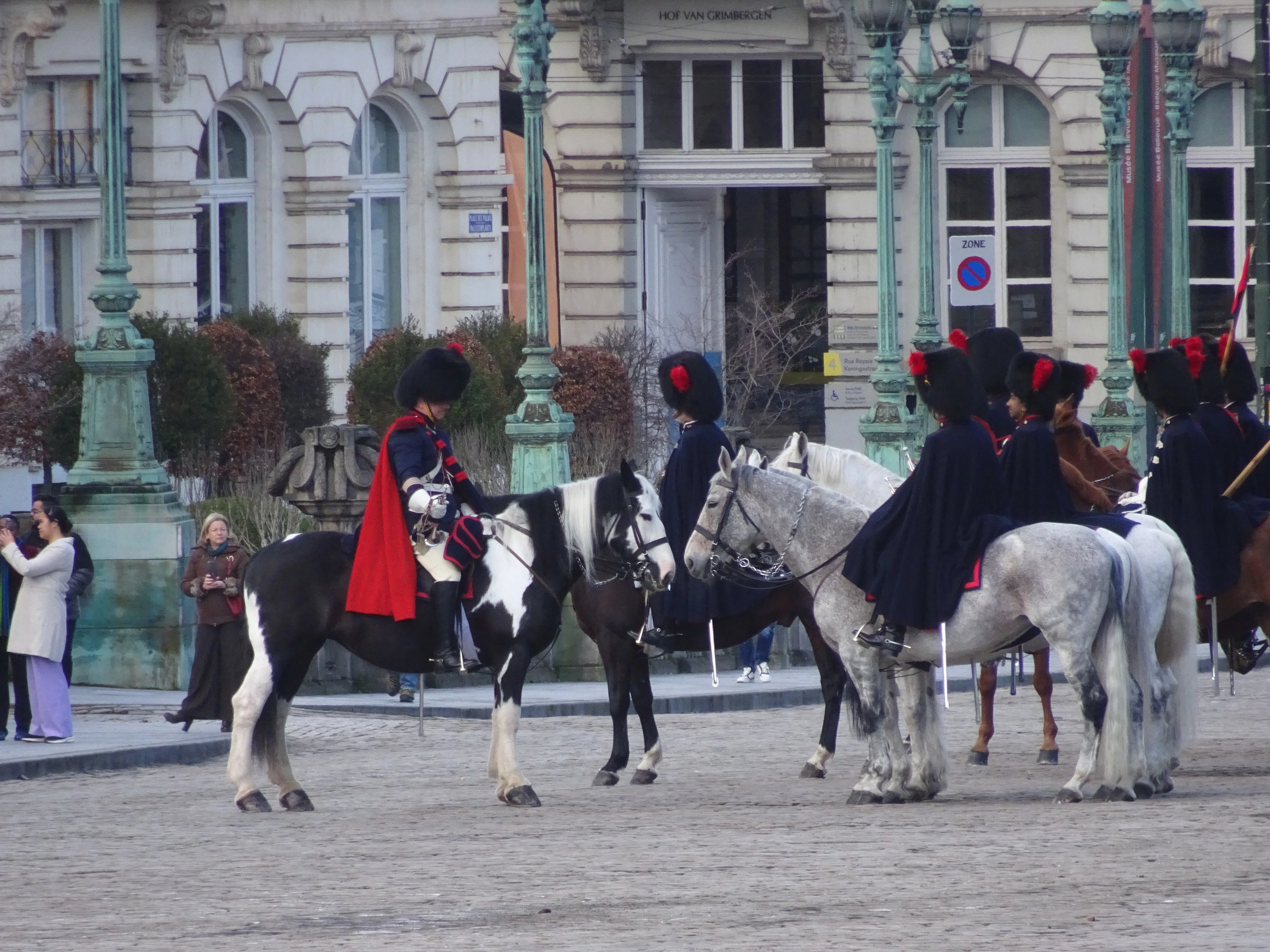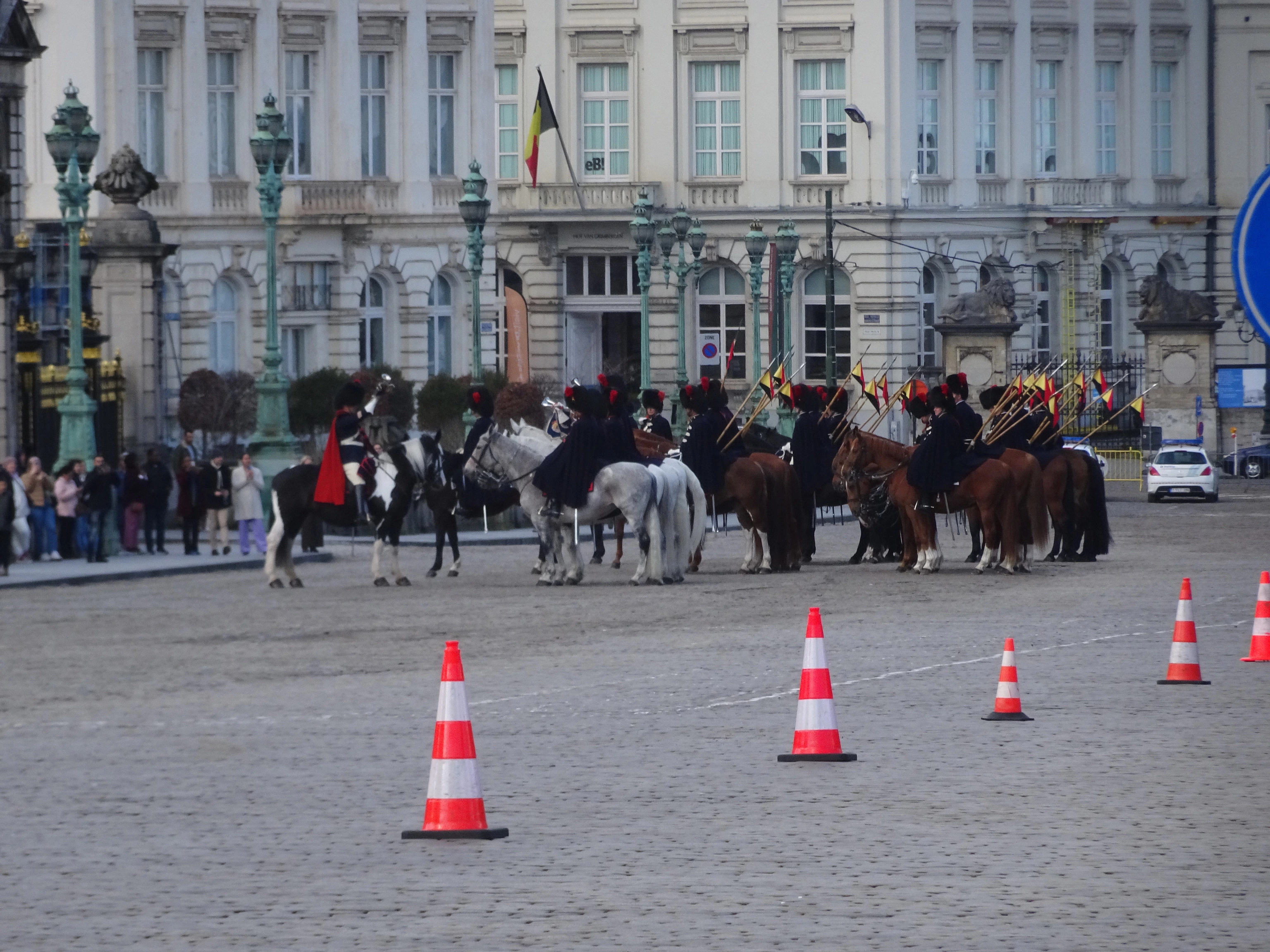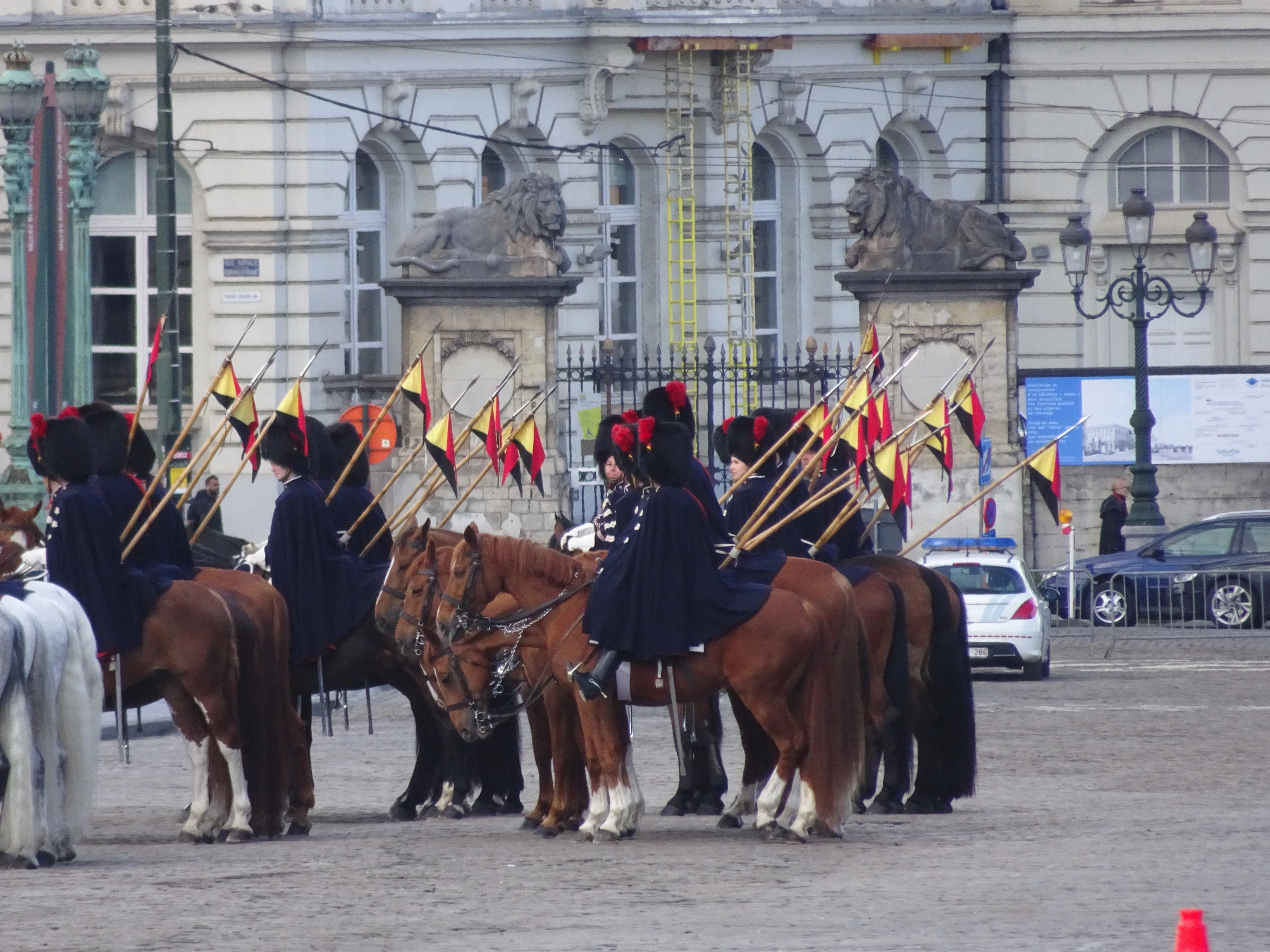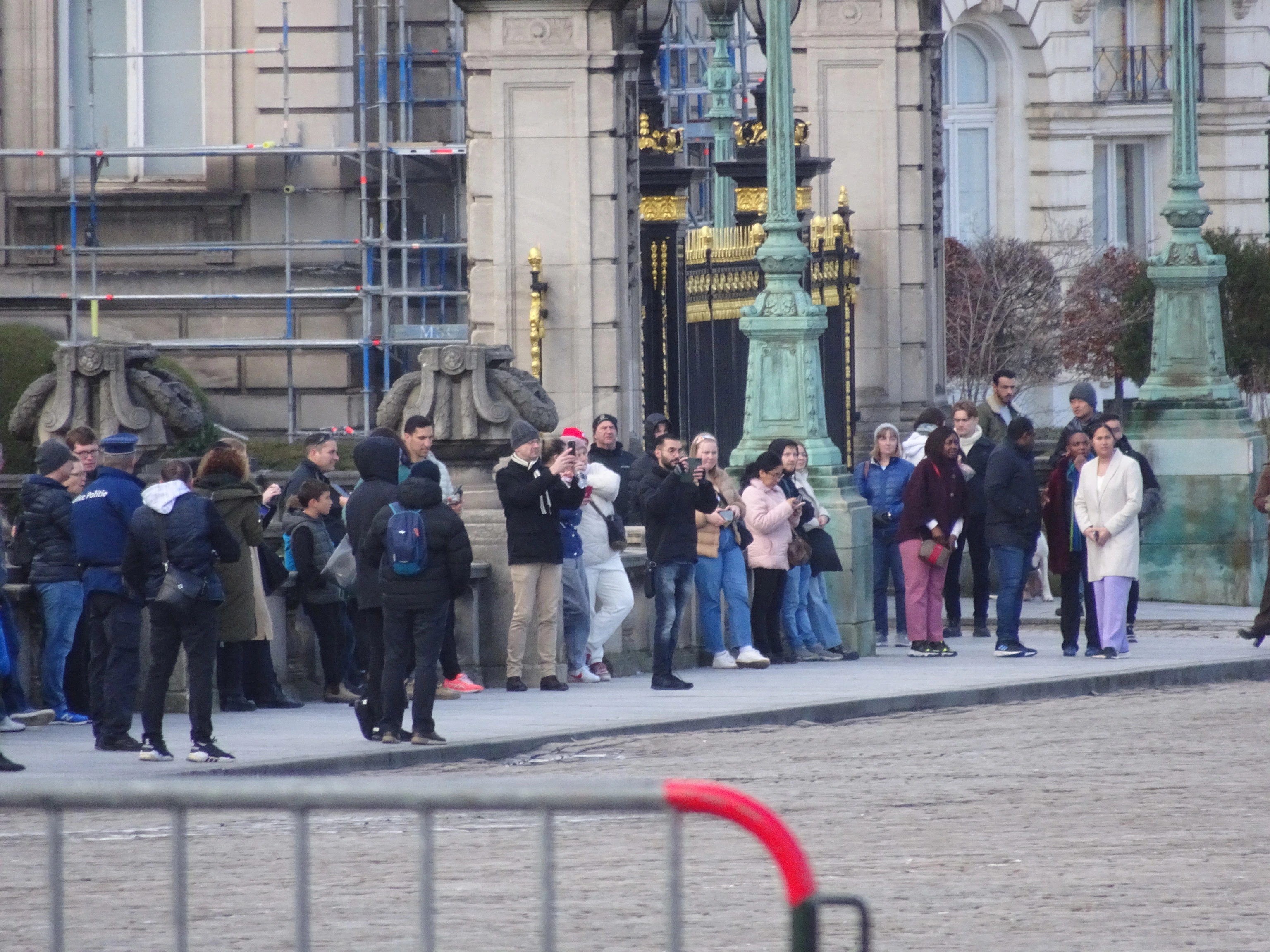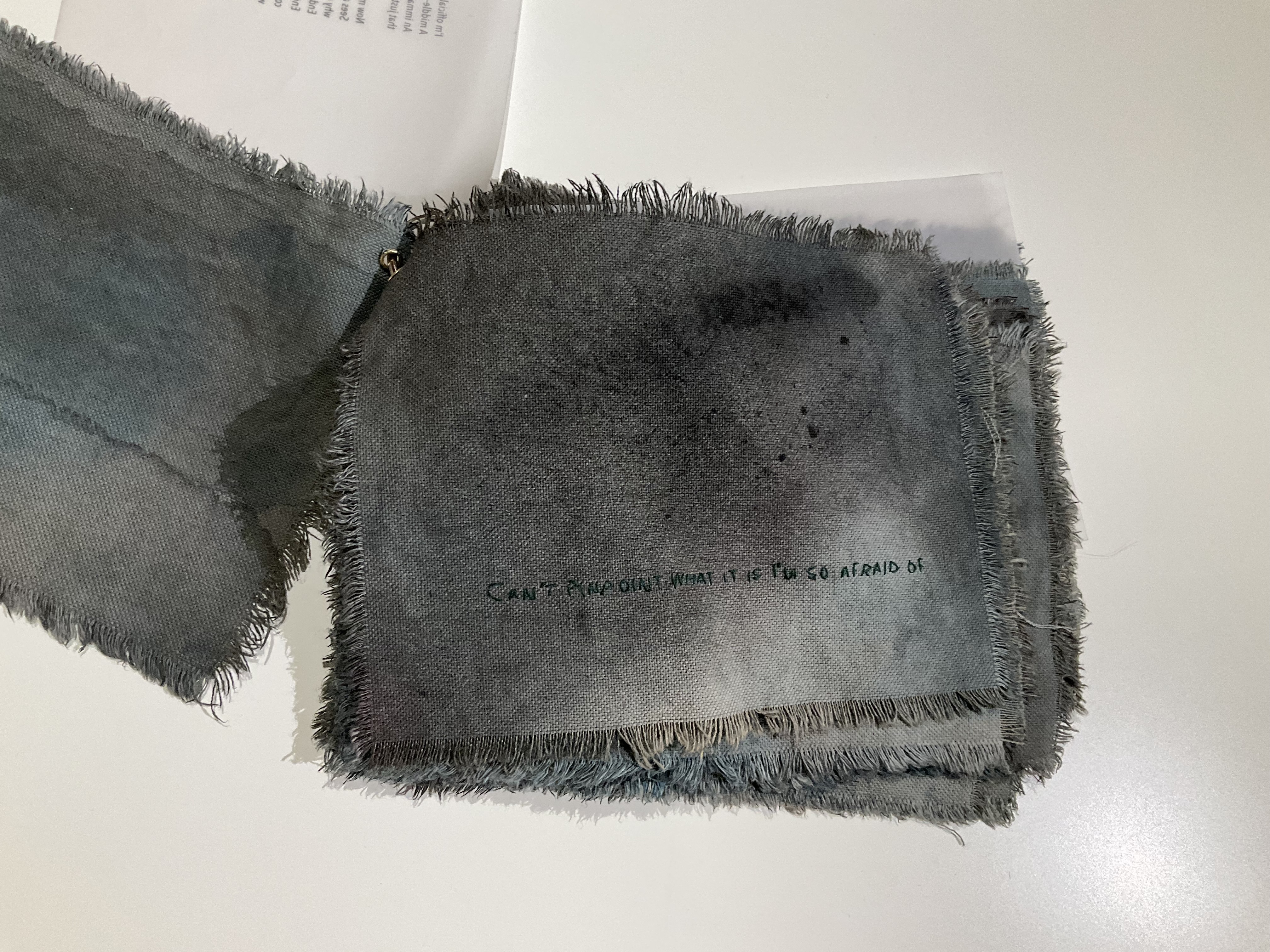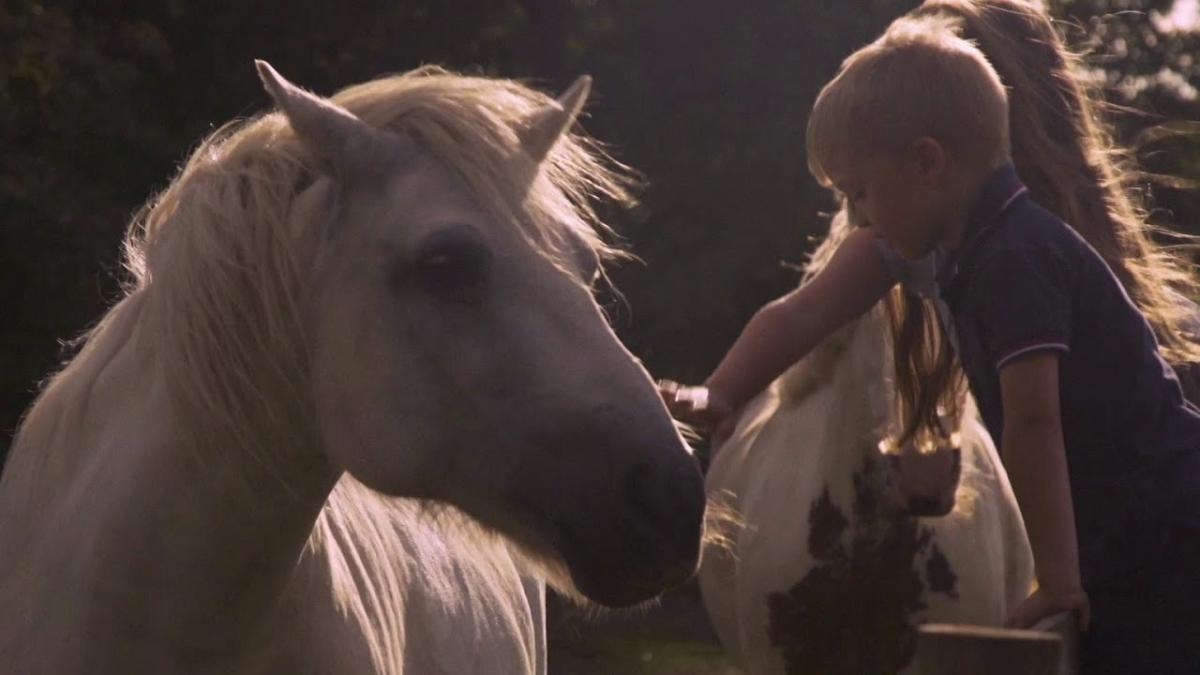#horses
#horses #slaughter #meat
From The Kill Pen | Full Documentary Movie
https://www.youtube.com/watch?v=sZf0sbpXkfk
2024 = 2³+3³+4³+5³+6³+7³+8³+9³ - Erzähl mir nichts vom Pferd. (Idiom)

#myphoto, #TiereAmWegesrand No. 14, #ViaAdrana
#Tiere, #animals, #Pferde, #horses, #Foto, #photo, #Natur, #nature, #Radtour, #biking, #Nordhessen, #Hessen
PALE=CHLOROS!! ---PLEASE WATCH ENTIRE VIDEO.. -- NEVER BEFORE #REVEALED UNTIL #NOW -SWORDS OF ISLAM
#colour of the #horses of the #Apocalypse
https://www.bitchute.com/video/V1vR14jhP7fH/
Les Amish, la vie au passé | ARTE
Originaires de Suisse et d'Allemagne, les Amish ont émigré en Amérique du Nord au XVIIIe siècle. Ils sont aujourd'hui connus pour leur mode de vie singulier, marqué par le conservatisme religieux et par le rejet de la modernité.
_
Dans les communautés amish aux États-Unis, notamment celles de Pennsylvanie, il n'est pas rare d'apercevoir des laboureurs accompagnés de chevaux de trait ou d'entendre les enfants entonner des chants religieux à l'école. Si de nombreuses technologies sont radicalement interdites à ses membres, certaines restent tolérées, notamment dans le cadre d'activités artisanales. Lors du "Rumspringa", les adolescents peuvent en outre explorer le monde extérieur et expérimenter des activités habituellement proscrites, comme fumer ou boire de l'alcool. À l'issue de cette période, ils choisissent de se faire baptiser ou de quitter définitivement la communauté.
_
Documentaire de Barbara Völkel (Allemagne, 2022, 44mn)
Bon, l'aspect religieux est un peu rebutant.
Mais si on devait choisir entre ça et la start-up nation avec la 5G partout et la matrice Big Brother...
#Arte #Amish #USA #EtatsUnis #Chevaux #ChevauxDeTrait #Horses #DraftHorses #Pferde #Zugpferde #Decroissance #Sobriete #Trottinette #LowTech #Communautes #Agriculture #AgriculturePaysanne #AgricultureVivriere #TractionAnimale #Zugtieren #Animal-drawn #Caleche #VoitureACheval #
Gestern, am 06. Juli, war Tag des Kusses, und so gab es einen Pferdekuss (Homonym.)

#myphoto, #TiereAmWegesrand No. 9, #Nordhessen, #ViaAdrana
#Tiere, #Pferde, #animals, #horses, #Metapher, #Homonym, #Sprichwortfoto, #Foto, #photo, #Natur, #nature, #Radtour, #Fahrrad, #biking, #Hessen, #fedibikes, @fedibikes_de group, @fedibikes group
#Pferdekuss:

Der neue Kumpel riecht noch komisch.
#animals #horses #horse #photography #mywork #myphoto #PletzfeldAnimalFriends #SiriTheHorse #CognacTheHorse
"how to ensure a child wont do drugs? give them a horse - they'll never have enough money for drugs"
Lalwa May is set to become the first Indigenous Australian horse rider to participate in the 2023 World Clubs Tournament in France.
The tournament is part of the annual French National Championships, the largest equestrian gathering in the world, which hosts competitions in disciplines from dressage to horseback archery.
Go you good thing!
#good-news #horses #equestrian #tournament #showjumping #Australia #France
https://www.youtube.com/watch?v=SQTHB4jM-KQ
#TheRollingStones - #Wild #Horses (Acoustic / Lyric Video)
#Music on #White-Electric-Wizard
#MickJagger 7/26/1943 #Birth English singer (The Rolling Stones)
Random holiday photo: Horses against the setting sun
Random holiday photos: Horses in Brandenburg against the setting sun. Actually I was about to leave a restaurant when nearby the sun backlight caught my eye, as did the horses. Such a pretty scene!
(Also I feel I want my old Moto XT1572 camera quality back. Very little sharpening, and a very good lens. My new Pixel 6 is excellent, but *sigh)
#photosaturday #photography #smartphonephotography #pointandshoot #availablelight #motoxstyle #horses #paarden #landscape #brandenburg #randomholidayphoto
https://www.youtube.com/watch?v=jtCNbERKvMs
#THE #WHITE #HORSES TV THEME by JACKY with Jackie's .
19 Sept 2009 ... Rupert the Bear title song by Jackie Lee · Robinson Crusoe Suite (1964 TV Series Theme) · The White Horses TV Series "start sequence" · The Monkees ...
#HEALING #HORSES
#ASHWINI #NAKSHATRA
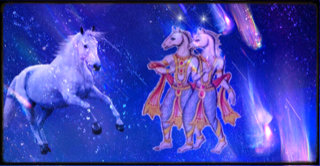
The Ashwini Kumar twins are the two human bodied and horse headed gods of all healing arts.
They are the twin stars in the constellation of Aries. The first of the constellations.
The head symbolism plays out strongly when we look at this constellation and it’s related stories. We see that the constellation of Aries rules the head and relates to the themes of Heads and head chopping that we will soon encounter if we read on.
Of note is also that the Sun is the father of the Ashwini Kumar twins.
Of note because the sun is exulted in Aries.
Let us firstly go to Greek myth as an introduction to the lessons of Ashwini Nakshatra.
The Greek mythology of the 12 labours of Hercules is an archetypal journey of the soul through the 12 zodiacal houses.
The first labour of Hercules is the lesson of Aries.
Hercules is possessed of legendary strength and with his strength comes a pride and satisfaction in himself and his abilities.
Hercules tended to overestimate himself to the point of blindness of others, as we will see in the the first labour, where the gods sent Hercules to go and tame the flesh eating mares.
Hercules easily does it with one arm.
Satisfied and full of pride with his easy achievement, Hercules goes off to celebrate his victory, handling the wild flesh eating horses to his best friend.
Hercules went off in search of grandeur and merriment.
Of course, his friend had not the strength of Hercules.
Hercules’ strength was his weakness and lack of clear perspective.
Hercules failed miserably at the very first labour and had to abjectly lament the loss of his best friend by a hideously violent death. All the blame was on Hercules and his blindness of reality.
We see the horse theme played out clearly here. We see the destructive side of horse power also, that is, power without grace and heart.
The whole constellation of the energies of the first labor of Hercules point to violence and the destructive side of horse power.
Without intelligence, there be no grace.
Without grace, there is only bravado and violence against the sacred heart.
Blindness and its cure is a pivotal theme of Ashwini Nakshatra
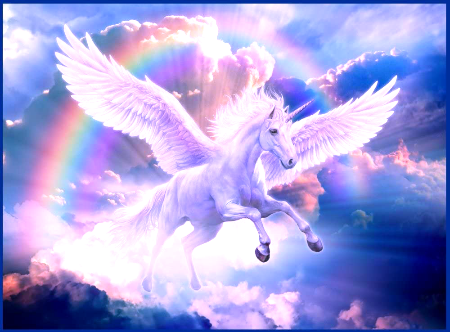
The Ashwini Kumar twins are the healing horse gods of the Yogins. These celestial healers actually have the cure to blindness. They are the Celestial horses who open the eyes of the heart by mixing grace with power.
Just like Hercules in the story above who got the lesson of Ashwini Nakshatra, when his eyes were opened after seeing the result of the arrogance and pride that lost him his best friend.
There are many stories that tell of how the Ashwini Kumar Twins cured blindness. In the Mahabharat for example, the following story is to be found, slight variants of the same story are scattered though the scriptures.
This is a story about the Star constellation of Ashwini Nakshatra:
Once there was a princess named Sukanya who married and cared for the ancient Yogi hermit named Cyavan who lived deep in the woods absorbed in Samadhi.
Cyavan meditated with his eyes blazing forward in the technique known as Tratak. (this will be part of the ritual meditation) Tratak gives one second sight.
After sitting for long years, the old Yogis body was covered in fallen leaves and ants, only his blazing eyes were visible in their burning focus.
The princess Sukanya was wandering in the woods and upon seeing two shining stars, she got curious, and with a stick she found on the ground. She proceeded to prick at the stars to see what they were.
Being the eyes of the Yogi, of course she unwittingly caused his blindness.
She agreed to marry and care for the now blind old Yogi as a way to recompense her action.
The Ashwini twins happened to be in the woods collecting healing herbs, when they saw the beautiful princess. They wanted to get on with some horseplay, but Sukanya was ever faithful and refused them angrily.
The twins are the very pictures of beauty. They are said to radiate health and beauty, and they did not ever experience being refused before.
They proposed that they would cure the blind old Yogi and make him young again, but only on the condition that she should identify him after his transformation, but if she chose wrongly, then she would have to get leave with them.
She wanted her old blind husband to regain vision and health, and so both she and the old Yogi agreed to the game.
The Horsey healing boys carried the now old decrepit and blind Yogi into the lake after giving him a mixture of some healing herbs. In the waters they did their healing magic. And when they emerged from the water, they all dazzled and glowed with startling radiance.
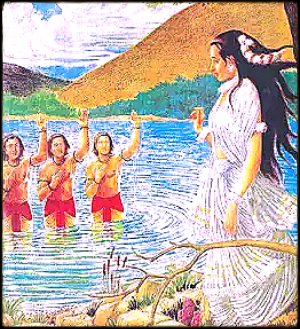
Sukanya couldn’t tell the difference between them, as all three were just radiating pure power. She felt into her heart and selected one of the three with the prayer that she would select her husband.
She of course selected her husband and the story went on to other things such as a bit of horseplay.
It is said that the mixture of healing herbs that the Ashwini twins gave to the old decrepit and blind Cyavan to restore him to power has been handed down the generations as the healing tonic known as Cyavanprash. Every Indian household has known this thick sweet substance. It is both feared and loved by children.
The story has a few notable points. It highlights firstly the eyes, vision and blindness, it goes into super sight, and into blindness, it emphasises the dark and light of vision.
The themes of healing, youth and revitalisation and sexuality are primary points in considering Ashwini Nakshatra as presented in the story above.
We will go on now to look into these themes.
Note the eyes that shone like stars. The eyes of the meditating Yogi that the princess poked out, are symbolic of the two stars in Aries of this constellation of Ashwini Nakshatra.
When the princess poked into these stars, she thereafter went through an epic life journey of the major themes of Ashwini Nakshatra.
By the end of this text you may do well to note the themes, consider her isolation and devotion that were called forward after the act of poking the eyes/stars.
A princess reduced to a reclusive servant is indeed an indicative symbol of Ashwini Nakshatra.
‘This Nakshatra brings a blindness that leads to vision’.
Ponder on this phrase.
In the rituals of Ashwini Nakshatra, one pokes at the starry eyes of vision and unfolds vitality and revivification of heart, body and soul.
The Yogin who works with Ashwini Nakshatra, attempts to become the princess who penetrates the stars and is gifted its healing secrets. The princess brought out the secret elixir of Cyavanprash after all!
Let us consider the 3 Nakshatra’s that are ruled by Ketu to further decode this mysterious energy. Ketu is the ruling Planet of Ashwini Nakshatra, which is the Nakshatra we are presently focusing upon. In Ashwini, Ketu is about going deep into the art of healing.
Ketu is also the ruler of Magha Nakshatra. Magha is the throne of royal power. In Magha, Ketu energy brings us to our seat of power through honouring our heritage.
Ketu is also the ruler of Mool Nakshatra, Mool Nakshatra is ruled by a Nirrti.
She is the Godess of destruction, born of Adharma and Himsa, (unhealthy action and violence) Mool literally means the Root of the body.
Think of the Root, it is the place of defecation, there is no creativity without destruction, is clear here in the sense of defecation.
This is the Base Chakra, the Anal area which is known also as the Ashwini horse point. This is the door of Ganesh. The Tantrics call it Gaja Dhwar, which literally means the elephant doorway.
Ganesh has two colours.
Firstly he is grey. Grey is the colour of Ketu. But Ketu is also said to be red, and so is Ganesh said to be red.
Ganesh is the deity of both Mars and Ketu. When Ganesh sits on the throne of Magha, he becomes the royal red ruby. The chair of Magha is the sexual opening which Tantrics call Shakti Dhwar, literally the doorway of the Goddess.
Rahu and Ketu are also opposites. Rahu is red and hungry. And when Ganesh is Red, he is in action and moving to the realm of Rahu. Rahu and Ketu are inseparable mirrors of each other.
Now the deeper connotation here is that the sexual opening is Rahu and the Anus is Ketu.
The Nadi (energy channel) receives the smoke of Ketu from the anus and out the sexual opening. Rahu and Ketu are connected to obscuration, eclipse and smoke.
This Mudra of drawing in ‘psychic smoke, into the anus is known as Ashwini Mudra.
It activates the Ketu energies and brings them into the field of consciousness.
Consider that after the horse defecates, it draws the anus in.
In the ritual of Ashwini Nakshatra, the anus is worked with to a rather great degree.
Moolbandh is the sexual door Mudra that swings the sexual door open and closed.
Ashwini Mudra is the action of swinging between the open and closed door of the Anus.
The Tantric learns to switch between these energetic actions and doorways.
Deep psychic energy is stored in these centres, by becoming conscious of the contractions and impulses of these doorways by making unconscious sensations conscious, the Yogins awaken the potentials of the Rahu and Ketu axis.
We will next consider the Story of the birth of Ashwini Kumar horse twins.
It is a story that points to sexual themes and dual energies.
Notice in the story that they came out of their mothers nostrils, one from each.
This is an encoded part of the story, that further points to the dual doorways of the anus and sexual openings.
The ritual practices of Ashwini Nakshatra involve connecting the nostrils with the lower doorway of the Anus, in what are known as the Ashwini Pranayam practices.
Let us look at the birth and origin of the Ashwini twins. We will consider the fascinating story of how they became the celestial healers, along with the perhaps even more fascinating story of their birth. This will take us deeper into the insight of their power and position amongst the stars.
On with the rather sexy story of horseplay and the resultant birth of the beautiful horsey healing boys who became the celestial healers.
Here we first visit a familiar myth of the Sun and his wife Chaya, the shadow woman:
Once upon a time, the Sun had a wife. She loved him, but he was too hot and overbearing for her with his active radiance and heat.
The Suns wife Sanjana, needed a break, and so she ran away to a far off forrest and took to Yogic practices in order to learn how to handle solar heat.
She practiced intense Tapasya and Chaya Karana. This is the practice of working with the shadow. At deep levels of this practice, the practitioner is able to get their shadow to move about and do things. Sanjana sent her double of the shadow woman Chaya back to her husband the Sun to stand in for her while she continued with Yogic practices.
The Sun suspected nothing as the Shadow wife resembled his wife Sanjana in every which way.
Time passed and many things happened. The Sun and the Shadow woman gave birth to Shuni (Saturn), who be the force and weight of Karma itself.
Chaya ended up cursing her children, Shuni and Yamaraja, the lords of Karma and Dharma. She left both of them limping with her curses.
Consider what this symbol of limping could mean when applied to these terrible two, as they are known.
Yamaraja and Yami the twins were born earlier from Sanjana, and Shuni was born of Shadow.
When the Sun thought about it, he realised that no mother would curse her children in this way, and so he cast his beams across the earth and saw his wife Sanjana practicing the ancient Yogic devotions in a far off forest.
He set off towards her. The wife started get hotter and hotter and realised that the sun had found out, she used her Yogic Siddhi (power) to turn herself into a mare and charged off at lightning speed, so fast was she that the sun was left in the dust. The Sun turned himself into a horse, and darkness descended without his solar light in the world. Then the chase began.
As he watched his wife run from behind, his sexual desire reached uncontrollable levels. He leapt through the sky with a mighty neigh and landed inside his horse wife and ejaculated instantly.
The horse wife sneezed at the moment that he ejaculated, and out of each of her nostrils were born the Ashwini twins.
They were beautiful and powerful with such potent sexual charm, that none could resist them.
It is said by Tantrics that the energy of the moment of sexual conception is ever carried in the aura until made conscious.
And so, the Ashwini horse boys became the celestial studs in the very truest sense.
We have already considered how Ketu is the ruling Planet of the Ashwini Star boys. And we have looked at how Ketu represents the Anus.
In Tantic lore, it is said the Sun in the guise of a horse mounted his horse wife anally, this refers to the Ketu element of the whole horsey constellation.
The work with the Anus is primary in working with Ashwini Nakshatra and Ketu in general.
Soon we will see how Venus hung upside down and inhaled the smoke of Ketu. This symbol can also be taken to mean that he inhaled through the Anus. (refer to the section on Venus below)
This anal inhalation of the smoke of Ketu, is a Tantric practice of the doorway known as Gaja (elephant), Dhwar (doorway) of the grey Ketu aspect of Ganesh.
The symbol of Ketu is inherent in the name Gaja Dhwar.
The anus is possessed of the nerve endings that when worked with, can access ones Karmic lessons in relation to Ketu.
This ritual night will be a night of Ass, and we are not talking mule!
The Ashwini Twins grew quickly into powerful healers. They wanted to extend their skills even further and lean the art of Rasanaya Vidya, also known as Madhubala Vidya, which means the wisdom of sweetness.
This is the wisdom of making potions and medicines and secret elixirs from even more secret herbs.
It was the god Indra who knew this science and carefully guarded it that no one should find out and become as powerful as he.
Indra taught it to the Rishi’s Dadachi for his own interests and protection.
But he told Rishi Dadich, that if he ever taught any of it to anyone, his head would be chopped off. (Take note of the Ketu symbolism here)
The Ashwini Twins were possessed of profound intelligence and figured out a way to learn the secrets. With their surgical skill, they simply removed the head of Rishi Dadachi and replaced it with the head of a horse. They learned the secrets of Rasayana Vidya and after they got every last drop of knowledge out of the horses mouth, they reattached the original head of Rishi Dadachi with the help of some healing elixir, The old Rishi was good as new.
Rishi Dadachi could not really be held accountable, and so he managed to keep his head.
In the section of Venus that follows the next, we will further see how Indra tried to make sure that Shukracharia should not get powerful enough to destabilize his throne as the King of Paradise.
Another version of this story tells how the Ashwini twins preserved the original head and the horses body. When Indra did chop of the horse head – that told the secrets – on the body of Rishi Dadachi, the twins simply replaced the original heads and found a way to get past the curse of Indra.
On account of this tale, Dadachi is also known as Ashvashirsa, which means horse headed.
Though this is a #Ketu ruled Nakshatra, we must consider that #Rahu can’t be separated from Ketu. After all they were once one being that was split in two.
They are ever 180 degrees to each other and move as a mirror.
They are the spiritual mirror of the Smokey realms of the soul.
Both are linked to smoke, one exhales and the other inhales smoke.
Rahu became the hungry head separated from the body, that consumes and looks ever forward, Rahu is never able to retain anything because he’s cut at the neck,
Rahu is ever exhaling smoke because things go right through him.
Rahu is said to be the exhalation of the Smoke that eclipses the sun.. and so his head expands ever forward and consumes.
He is exaggeration. Rahu is a loud energy that makes everything in realty grow and appear larger than it is.
He takes away the light and makes one becomes blind to reality.
Rahu ornaments things, he is drama and dress, he is the oversized crystal ring and the styling with bling, the ego if you will.
Rahu is the head in the hand of Kali Ma. Until the head is taken off, Ketu is not awoken.
So Ketu is the body half that is also symbolised as the tail of the serpent. The birth star of Ketu is the celestial serpent of Ashlesha Nakshatra incidentally.
Ketu is the reflection of Rahu. He is the exact opposite. The tail portion is the detachment. The Root of Kundalini Shakti.
Ketu is a severe force of asceticism. Ketu is solitude and potent detachment.
Ketu has not the hungry head of Rahu on his shoulders. His head has been cut off. Ketu is the acceptance of the past. Ketu is the past and the one who retains it, unlike the head who is ever hungry.
Ketu therefore inhales smoke.
Rahu gulps and bolts his food down and is unaware of the consequences of his actions, because there are no consequences for him, everything simply just passes through him. Rahu is loud and the mouth is ever smacking its lips in search of more, ever hungry and ever tired and never fulfilled.
Ketu on the other hand – as we are told in the stories – is given to fasting and hardly eating or sleeping. He is the aseptic who takes what he gets.
Several Magical novels of Hermann Hesse, are very indicative of the the themes of the Rahu and Ketu axis issues. Those wishing to investigate this energy through existential themes would do well to read,
The Glass Bead Game (1943),
Narcissus & Goldmund (1930)
Siddhartha (1922)
The Journey of Ketu is down and back .
Consider the story of Shukracharia (Venus) He has the wisdom of Mritsanjeevani Vidya. This is the ability to awaken the dead. Shukra means sperm quite literally. He awakens the spirits of the past and gives them life.
The spirits and ancestors of the past are known to Yogins as the Pitris. The Pitris ruling planet is nothing but Ketu.
Shukracharia (Venus) got this power to awaken the dead by hanging upside down from a tree and breathing in the smoke of a fire that burned beneath him.
This is a very strong ancient Tantric Sadhana that a few Tantrics still do to this day.
The reversal of the head under the heart is a symbol to meditate upon here. Shukracharia started to slowly acquire power as he continued his austerity.
His nemesis and opposite Indra sent his daughter Jayanti to stop Shukracharia from getting powerful (remember that Indra is the king of the Devas, and Shukracharia is the Guru of the Asuras).
Indra’s daughter sprinkled chili-powder into the fire so as to stop Shukracharia completing his ritual austerity, but still he induced and continued. She added more spice until the fire burned noxiously with thick suffocating clouds of smoke.
Blood started to pour profusely out of Shukracharia’s swollen head. It came out from his eyes, nose, mouth and ears and landed in the fire which burned poisonously.
He breathed excruciatingly as the toxic Rahu laced smoke was breathed in.
Pay attention and note that these are the openings in the head, the chili is Rahu and so is the head, but the head is upside down at 180 degrees, which indicates the place of Ketu. Chili powder is also red, this red colour of the chilli powder is a very significant detail, as you will see if you’ve payed attention.
Shukracharia’s head being upside down signifies that he turned around and went from Rahu to Ketu by restraining himself to this austerity.
The Rahu energy tried to distract poor old Venus from completing the ritual that would give him the power to raise the dead.
The Rahu energy brought spice and drama and all the blood sweat and tears that goes with that. It brought all of this for Ketu to resolve. Did Venus continue.
Hell yes he did!
Shiva stepped in to overt the potential explosion of the head after years of hanging over the noxious fire. Shiva blessed Shukracharia with Mritsanjeevani Vidya and so the enduring Venus got the power to raise the dead ancestors (Remember that Shukra means sperm).
That Shukracharia underwent this extreme austerity with ruthless fortitude is indicative of him aligning to the energy of Ketu, who represents the extreme magical austerity known as Tapasya. This is the skill to turn towards introspection when the fires of heated motion prevail. Ketu is the one who turns action inward. Actions of restless activity, such as searching, looking, moving, doing and scrolling though the endless rows of information are commanded by Ketu.
Ketu is extremely stern and able to face deep solitude and pain.
Ketu can weather the harshest terrain because he inherently carries the vision of healing.
The daughter of Indra was so impressed by the devotion of Shukracharia, that’s she fell in love with him. Much to the dismay of her father Indra, who now had lost his daughter to his arch enemy.
What a story!
The Tantric’s initiate is to cut off at least one head in their lives.
Removing their own head of the Rahu within and becoming the audience and not the participants of ancestral Karma and drama.
Rahu is the head that likes to add a bit more spicy chili powder to reality.
Ketu is the one to release and heal by stepping out of the action of ever consuming the Karma that we are involved in.
Ketu is like the isolation, reduction and restriction… this is especially poignant in these times where Rahu is the excess. His motto is more is better, he wants to sprinkle every damn flavor on his plate but is never satisfied and so never steps out of the cycle of ancestral Karmic patterns and never will, his motion is up and out.
When we go down to the ground where Ketu is, then we take to simplicity and healing. (Ketu’s motion is down and in) Ketu is the record keeper of all events, he therefore represents memory. When memory is gone it is a sign that Rahu is in town and has taken over. At its most extreme expression we see dementia. Memory decay and dementia is a symptom of Rahu. He’s so hungry for more of everything that nothing registers and no memory of any action is retained.
Sometimes we pick up these ancestral patterns if we are familiar to this.
Whatever the excess is, one can be certain that in excess consumption memory will not be. Whether one travels between countries and cultures on the quest for experience, or whether they spend and buy to excess.
It is the excess that erodes the Part of the mind responsible for memory. The Mannas, as it’s called, is the mind to the Yogins, it is made up of several faculties, and memory is one component.
Before we move on from the detachment, moderation and introversion of Ketu, let us also consider that he is focus, devotion and the stamina to see things through.
But focus, devotion and the stamina to see things through, can be ruin if it’s done in Rahu fashion.
Focus, devotion and the stamina done in Ketu fashion is healing, it is introspection, it is the secret to access and heal the memories of the past.
A study of our Rahu/Ketu axis is the path of Tantra.
Some Tantrics go so far as to take of a head as a reminder of the divide between the two. We have perhaps heard about the skull of the Yogin. We might be quick to dismiss it as superstition or bad magic if we follow the popular narratives of a shallow culture that is most comfortable with parroted slogans.
There is reason why the Skull is the symbol of the Tantra.
Ponder on why that may be?
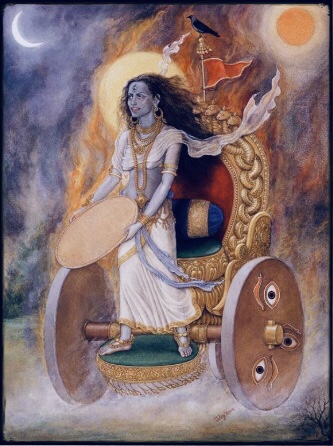
Ketu is symbolised as a flag. The flag at the peak of an Indian temple is placed in honour of Ketu. Ketu is the flag on the chariot of Dhumavati, and also the flag on the chariot of Krishna and Arjuna in the great spiritual battle known as Mahabharat.
Ketu is the accomplishment. When the mountain climbers reached the top, they would put a flag to mark the victory, this explains Ketu in a nutshell.
But Ketu is not the champagne and after party only. Ketu is the friends that fell down the rockslide as you climbed.
Ketu is the rock that sliced the hand open as you tried to save yourself from falling backwards into abyss, the selfsame hand that went septic with little hope of recovery.
When the right hand of action goes septic, we might turn to the left-hand way of Vamamarg… This is the way of the heart.
Ketu is the tears of loneliness as you realise you’re lost from the team of other climbers.
Ketu is headless and can’t see the way, but ’tis he who for that reason, finds the way!
Ketu is for this reason connected to Moksha, liberation and release.
To say he is a hard teacher is a grand understatement.
But he gets the job done.
May you place your flag victoriously upon the Mahabharat mountain of your destiny.
https://www.ancient-tantra.com/65-ashwini-nakshatra/

